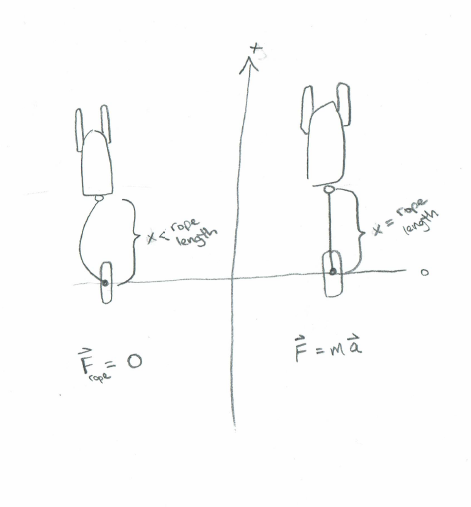
Last Semester I did the first installment of The Physics of Snowboarding, I will make reference to it, and it can be viewed
here.
I have new material though, I actually did not get the chance to go conventionally snowboarding this year, being the diligent college student that I am, but I did get one chance to go
out towboarding. My friends towed me on my snowboard behind their snowmachines at the Chena Floodplains. While I was being towed, and when I fell, I noticed some interesting physics.
First I noticed the tow rope - either the distance between myself and the machine was less than the length of the rope and there was no tension force from the rope on me, or the distance
was equal to the length of the rope and there was a force. This is illustrated on the right in one dimension. If I place myself at the origin then the force of tension could be seen as a
peacewise function: Force = 0 when x < rope length or Force = mass * acceleration when x = rope length.

The big difference in towboarding is that you are getting your acceleration from the tension of the rope rather than gravity. You can effectively take everything I said last semester regarding
balancing around the gravity vector which goes from your center of gravity towards the center of the earth and change it to balancing around a force vector which goes from your hands to the sled
pulling you. The added difficulty is dominately the strength required to transmit the Tension force from your arms through your body to the board. To qualify this difficulty I am going to greatly simplify
the situation, I will be pulled in 1 dimension first, and because the resistance of drag is so small compared to the force of the machine pulling me I am going to approximate it away, as I did last time with air resistance.
This simplified situation only works for constant and increasing velocity on flat ground, but that is all I need to get started. My reasoning is from experience, in the ideal situation of a taute rope at a constant velocity
over flat ground the drag is noticable, but quite managable. What could quickly overpower me and cause me to fall though was a jerk, which is well known as the third derivative of position or the first derivative of acceleration;
simply put a sudden increase in acceleration is what knocks you down. Placing this idea back on my previous peicewise definition of force we are pretending that with no acceleration the rope has no tension force, like it was just
flapping in the wind. Of course this is not true, but I am only trying to define what knocks you down, not the equilibrium. Continuing with that thought we can imagine I do not slow down, so my acceleration
can be represented as a similar peicewise function: MyAccel = 0 when x < rope length or MyAccel = SledAccel when x = rope length. Finally this leads to a change in force, which could be imagined as the push that knocks you down,
and is only dependant on a change in acceleration; therefore, a jerk pushes you.
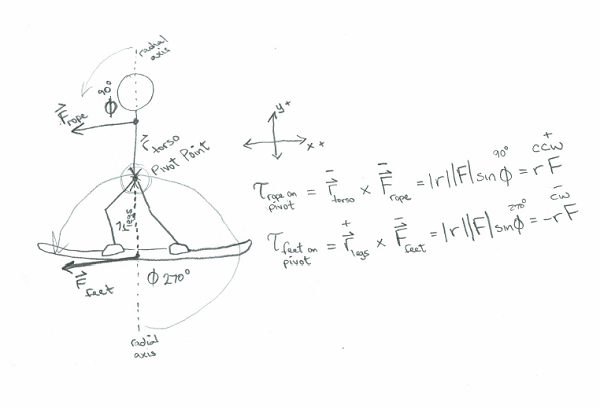
Now that we have a simplified tension force to pull me I can add a dimension and show how that force transmits through me from a side view, see illustration to right. The rope pulling
from my shoulder creates a pivot point at my waist, the torque on this pivot point from the pulling force of the rope yeilds a positive cross product, and therefore is in the counterclockwise direction,
trying to bend me forward. If I were to let it my board would not be pushed forward and would be dragged behind me. So I need to supply and equal torque on my waist to counteract the torque from
the rope. This is supported by the cross product of the pushing force from my feet which is negative, and therefore in the clockwise direction.
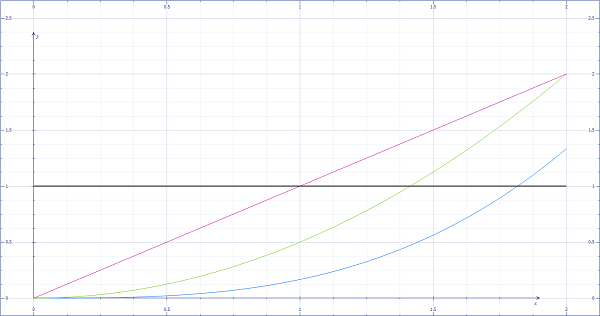
To the left I have modeled an ideal start in a graph of Position (meters blue), Velocity (meters/second green), Acceleration (meters/second squared purple), and Jerk (meters/second cubed black) all versus Time (seconds).
The graph is based off a position x=t3/6, and seems reasonable as a start considering how touchy snowmachine throttles are, at one second the velocity is one half of a meter per second which is roughly
one mile per hour. This model has a linearly increasing acceleration and therefore a constant jerk, which can be felt as the impulse pulling your arms out of their sockets. This is obviously far worse for a sudden
jerk, like if there is slack in the rope. In an attempt to quantify this I will evaluate my simplified force of tension at one second. Using an average weight of 70 kilograms the force at 1 meter per second squared is 70 Newtons.
Below is another simplified analogy where the torque from 70N towing would be like balancing your back horizontally with roughly 15 pounds on your chest.
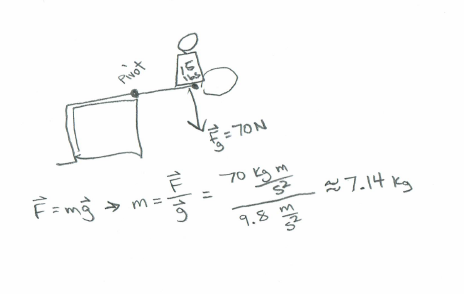
I had several more computations to relate that didn't quite work out, including an attempt to calculate the thermal efficiency of a snowmachine as a heat engine using horsepower as work
done and fuel mileage and the density and energy content of gasoline. It didn't work because all I had was max horsepower and average fuel economy. It was a great excersize in dimensional analysis though.
This would all be so much easier if I could take measurements. The last thing I will add is what I was attempting to calculate in as added tension on the tow rope and that is the torque required to turn.
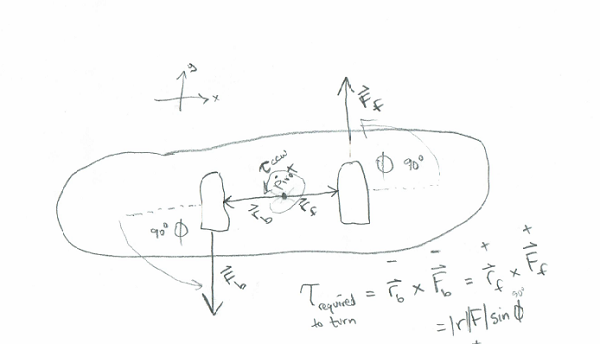
References
Knight, Randall Dewey. "Physics for scientists and engineers -- 3rd ed." textbook, 2013, James Smith
Header Background Image Source:
gnu.com





